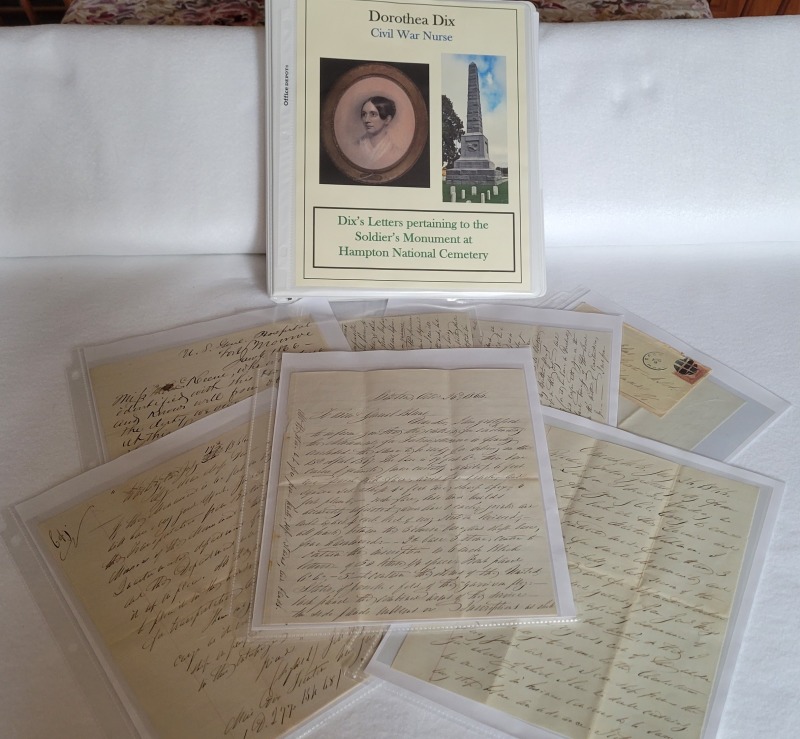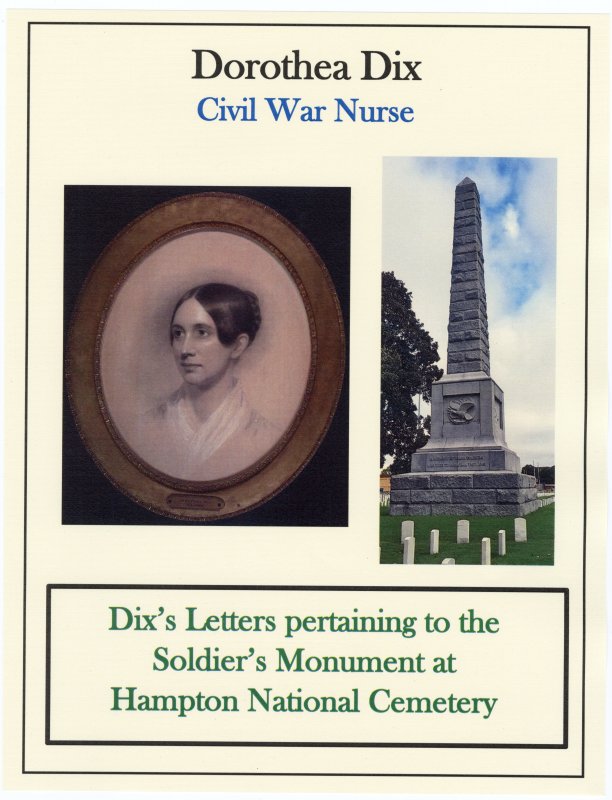Dorothea Dix Letter Group
Item MED-9401
1866
Price: $2500.00
Description
6 original Letters written by Civil War nurse, Dorothea Dix and 1 letter written by Major J. H. Frantz (Vice President of the Monument Board) in an effort to establish a Union soldiers monument at Hampton National Cemetery. All letters are written in period ink and dated.Dorothea Lynde Dix was an American advocate on behalf of the indigent mentally ill who, through a vigorous and sustained program of lobbying state legislatures and the United States Congress, created the first generation of American mental asylums. During the Civil War, she served as a Superintendent of Army Nurses.
During the American Civil War, Dix, on June 10, 1861, was appointed Superintendent of Army Nurses by the Union Army, beating out Dr. Elizabeth Blackwell. Dix set guidelines for nurse candidates. Volunteers were to be aged 35 to 50 and plain-looking. They were required to wear unhooped black or brown dresses, with no jewelry or cosmetics. Dix wanted to avoid sending vulnerable, attractive young women into the hospitals, where she feared they would be exploited by the men (doctors as well as patients). Dix often fired volunteer nurses she hadn't personally trained or hired (earning the ire of supporting groups like the United States Sanitary Commission).
At odds with Army doctors, Dix feuded with them over control of medical facilities and the hiring and firing of nurses. Many doctors and surgeons did not want any female nurses in their hospitals. To solve the impasse, the War Department introduced Order No. 351 in October 1863. It granted both the Surgeon General (Joseph K. Barnes) and the Superintendent of Army Nurses (Dix) the power to appoint female nurses. However, it gave doctors the power of assigning employees and volunteers to hospitals. This relieved Dix of direct operational responsibility. As superintendent, Dix implemented the Federal army nursing program, in which over 3,000 women would eventually serve. Meanwhile, her influence was being eclipsed by other prominent women such as Dr. Mary Edwards Walker and Clara Barton. She resigned in August 1865 and later considered this "episode" in her career a failure.
But her even-handed caring for Union and Confederate wounded alike, assured her memory in the South. Her nurses provided what was often the only care available in the field to Confederate wounded. Georgeanna Woolsey, a Dix nurse, said, "The surgeon in charge of our camp...looked after all their wounds, which were often in a most shocking state, particularly among the rebels. Every evening and morning they were dressed." Another Dix nurse, Julia Susan Wheelock, said, "Many of these were Rebels. I could not pass them by neglected. Though enemies, they were nevertheless helpless, suffering human beings."
When Confederate forces retreated from Gettysburg, they left behind 5,000 wounded soldiers. These were treated by many of Dix's nurses. Union nurse Cornelia Hancock wrote about the experience: "There are no words in the English language to express the suffering I witnessed today...."
Dix was well respected for her work throughout the war because of her dedication. This stemmed from her putting aside her previous work to focus completely on the war at hand. With the conclusion of the war her service was recognized formally. She was awarded with two national flags, these flags being for "the Care, Succor, and Relief of the Sick and wounded Soldiers of the United States on the battlefield, in camps and Hospitals during the recent war." Dix ultimately founded thirty-two hospitals, and influenced the creation of two others in Japan.
At the end of the war, Dix helped raise funds for the national monument to deceased soldiers at Fortress Monroe. Following the war, she resumed her crusade to improve the care of prisoners, the disabled, and the mentally ill. Her first step was to review the asylums and prisons in the South to evaluate the war damage to their facilities. In addition to pursuing prisons reforms after the civil war, she also worked on improving life-saving services in Nova Scotia, establishing a war memorial at Hampton Roads in Virginia and a fountain for thirsty horses at the Boston Custom Square.
[Information from Wikipedia]


